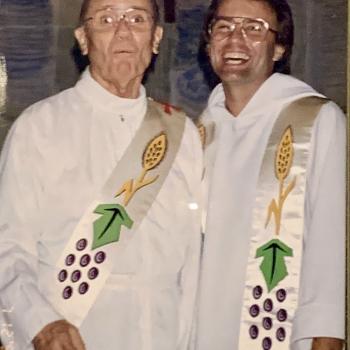He’s the wizard who came up with all-number dialing and was the pioneer of the touch-tone telephone. He died last month at the ripe age of 94:
His research, along with that of his subordinates, quietly yet emphatically defined the experience of using the telephone in the mid-20th century and afterward, from ushering in all-digit dialing to casting the shape of the keypad on touch-tone phones. And that keypad, in turn, would inform the design of a spate of other everyday objects.
It is not so much that Mr. Karlin trained midcentury Americans how to use the telephone. It is, rather, that by studying the psychological capabilities and limitations of ordinary people, he trained the telephone, then a rapidly proliferating but still fairly novel technology, to assume optimal form for use by midcentury Americans.
“He was the one who introduced the notion that behavioral sciences could answer some questions about telephone design,” Ed Israelski, an engineer who worked under Mr. Karlin at Bell Labs in the 1970s, said in a telephone interview on Wednesday.
In 2013, the 50th anniversary of the introduction of the touch-tone phone, the answers to those questions remain palpable at the press of a button. The rectangular design of the keypad, the shape of its buttons and the position of the numbers — with “1-2-3” on the top row instead of the bottom, as on a calculator — all sprang from empirical research conducted or overseen by Mr. Karlin.
The legacy of that research now extends far beyond the telephone: the keypad design Mr. Karlin shepherded into being has become the international standard on objects as diverse as A.T.M.’s, gas pumps, door locks, vending machines and medical equipment…
…Mr. Karlin’s biggest challenge was almost certainly the advent of the push-button phone, officially introduced on Nov. 18, 1963, in two Pennsylvania communities, Carnegie and Greensburg.
In 1946, a Bell Labs engineer, Rudolph F. Mallina, had patented an early model, with buttons arranged in two horizontal rows: 1 through 5 on top, 6 through 0 below. It was never marketed.
By the late 1950s, when touch-tone dialing — much faster than rotary — seemed an inevitability, Mr. Karlin’s group began to study what form the phone of the future should take. Keypad configurations examined included Mr. Mallina’s, one with buttons in a circle, another with buttons in an arc, and a rectangular pad.
The victorious design, based on the group’s studies of speed, accuracy and users’ own preferences, used keys half an inch square. The keypad itself was rectangular, comprising 10 keys: a 3-by-3 grid spanning 1 through 9, plus zero, centered below. Today’s omnipresent 12-button keypad, with star and pound keys flanking the zero, grew directly from this model.
Putting “1-2-3” on the pad’s top row instead of the bottom (the configuration used, then as now, on adding machines and calculators) was also born of Mr. Karlin’s group: they found it made for more accurate dialing.
Who knew? RIP, John Karlin. Read more.











